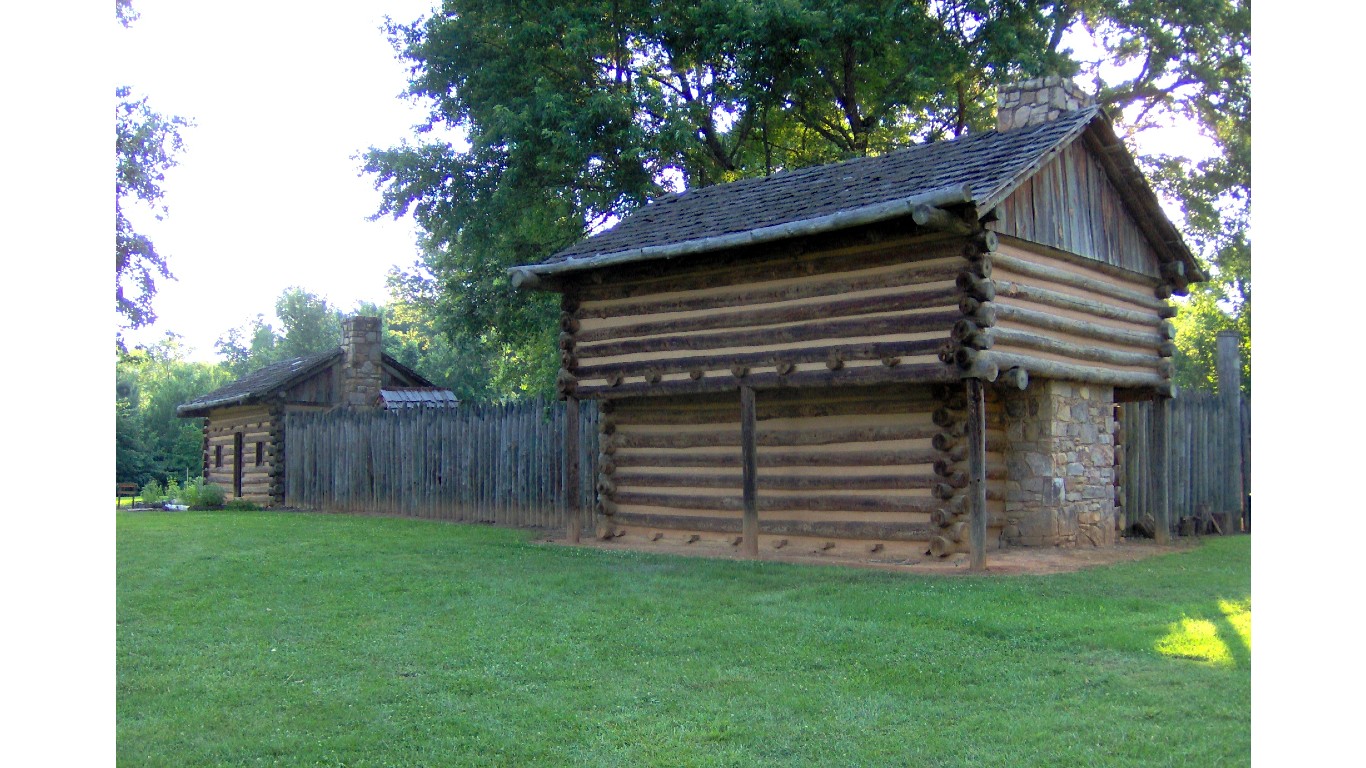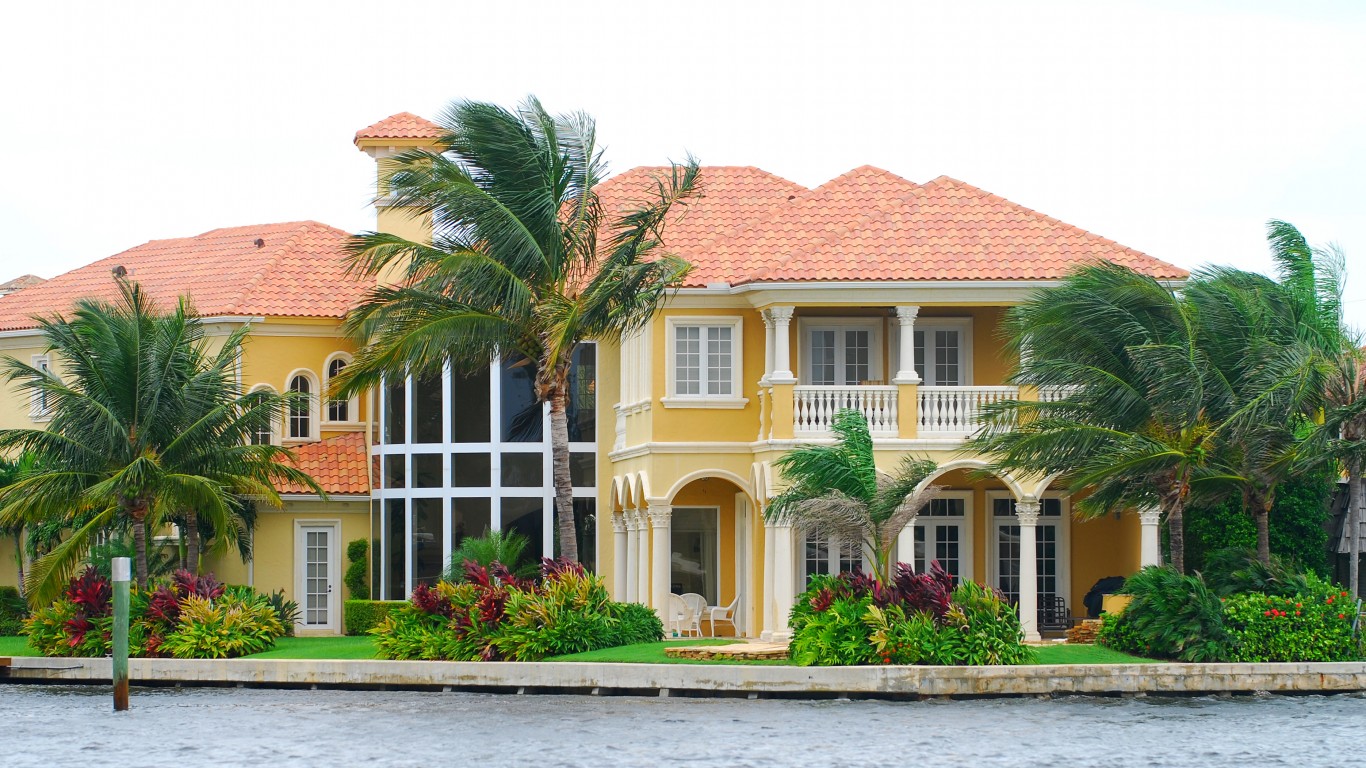
Today, many national, state, and local parks are admired for their beautiful scenery and recreational perks. But you may be surprised to learn that a number of these parks actually began as military forts dating back to the Revolutionary War. Several also served as Army outposts during clashes with Native American tribes. Even after those early conflicts ended, some remained active during World War II. (Here’s how every war in U.S. history ended.)
To identify 14 of the oldest early American forts, encompassing fortifications that were built between 1775 and 1800, 24/7 consulted sources including the National Park Service and various state and regional tourism websites. Sites that contain only unrestored earthworks were largely excluded.
While the original structures are often gone, many sites now contain ruins, reconstructions, or historically accurate replicas on the original grounds. Thanks to extensive restoration by various government authorities, tourists can visit these forts to immerse themselves in early American history. (To see fortifications that predate those on our list, see the oldest military forts built before America was a country.)
In their time, not all of the forts served solely military purposes. Some started off partly as commercial or traveler stopover spots. Fort Vancouver in Washington, for instance, was actually a fur trading hub with no Army ties. Others like Missouri’s Fort Osage performed dual roles – providing a base for troops guarding the Louisiana Purchase lands while also assisting the Lewis and Clark Expedition.
America wasn’t the only early power represented either – The Presidios of San Francisco and Santa Barbara were originally established by Spain to protect its California territory.
Click here to see 14 forts that are as old as America

Fort Adams
> Location: Newport, Rhode Island
> Built: 1799
Located at the harbor mouth of Newport Harbor, Fort Adams served as a military fortification from 1841 to the first half of the 20th century. Now under the auspices of the state, Fort Adams hosts the annual Newport Jazz Festival and Newport Folk Festival.

Fort Hamilton
> Location: Rose Island, Rhode Island
> Built: 1798
The first buildings at Fort Hamilton were erected during the Revolutionary War in 1780, with construction continuing from 1798 to 1801. In the late 19th century, the fort served as part of the U.S. Naval Torpedo Station. During World War I and II, it warehoused munitions for the Navy, and anti-aircraft guns were stationed on the island during World War II. In 2001, the fort was added to the National Register of Historic Places.
[in-text-ad]
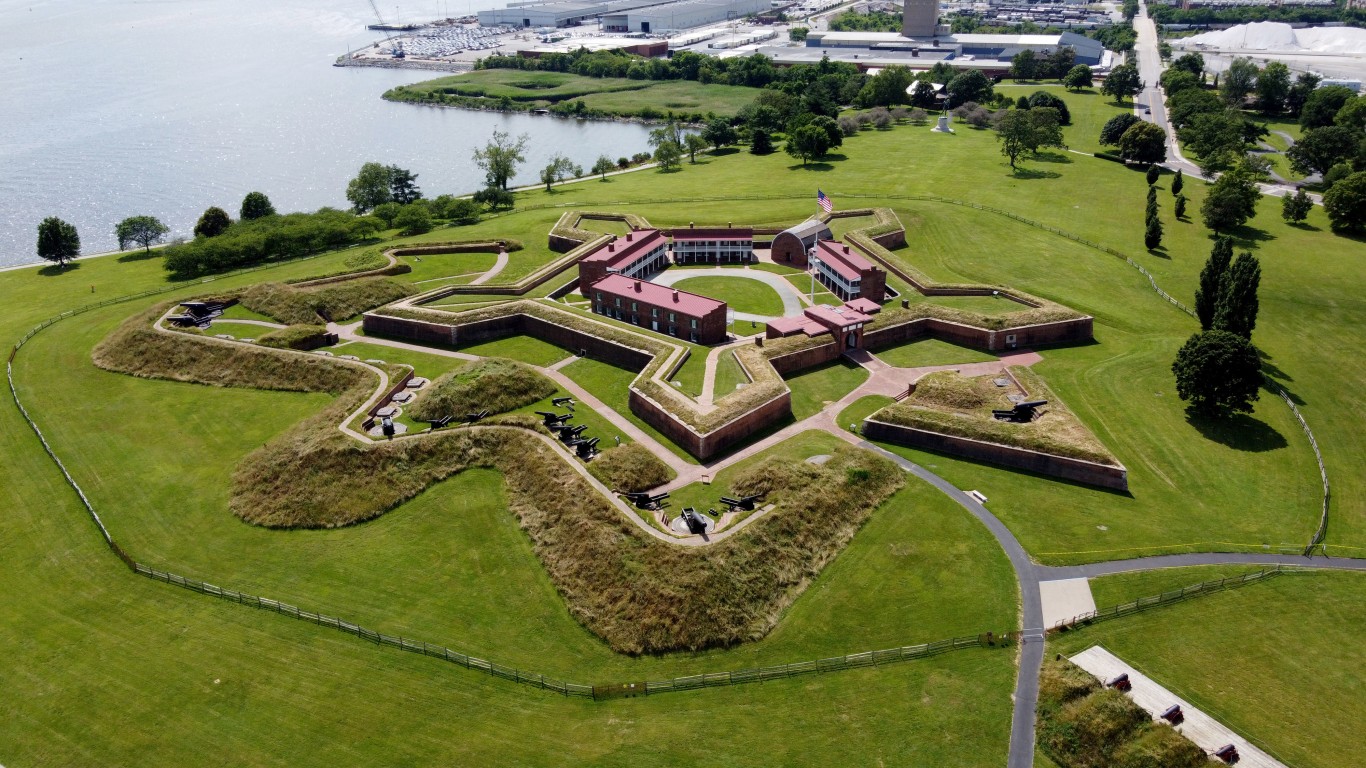
Fort McHenry
> Location: Baltimore, Maryland
> Built: 1798
Although built in 1798, Fort McHenry is best known for its defense of Baltimore Harbor from the British Navy from Sept. 13 to 14, 1814. The American victory and the site of the U.S. flag being flown over the fort inspired Francis Scott Key to write the lyrics to what is now called “The Star-Spangled Banner.” During World War I, the U.S. military occupied the fort, as did the Coast Guard during World War II. It was designated a National Park in 1925.
Fort Southwest Point
> Location: Kingston, Tennessee
> Built: 1797
Overlooking the confluence of the Tennessee and the Clinch rivers, Fort Southwest Point housed federal soldiers from 1797 to 1811. During that time, the frontier station saw clashes between Cherokees and the U.S. government. It also served as a way station for migrants traveling between Knoxville and Nashville. Notably, between the late 1790s and early 1800s, the fort was a recruitment and planning station for the Lewis and Clark Expedition.

Fort Norfolk
> Location: Norfolk, Virginia
> Built: 1795
President George Washington commissioned Fort Norfolk in 1794 to defend the harbor at the Elizabeth River, and it protected the city during the War of 1812. Confederate forces captured the fort during the Civil War, but Union troops recaptured it in 1862, using it as prison. Fort Norfolk later served as an ordnance depot for the Navy. The U.S. Army Corps of Engineers took over the fort in 1923 and still owns it.
[in-text-ad-2]
Presidio of Santa Barbara
> Location: Santa Barbara, California
> Built: 1782
The Spanish founded the Presidio of Santa Barbara in 1782 as a military installation to defend the Second Military District in California. One of its structures, known as El Cuartel, is the second oldest building in California, after the chapel at Mission San Juan Capistrano. Today, El Presidio de Santa Barbara State Historic Park is a thriving tourist attraction.
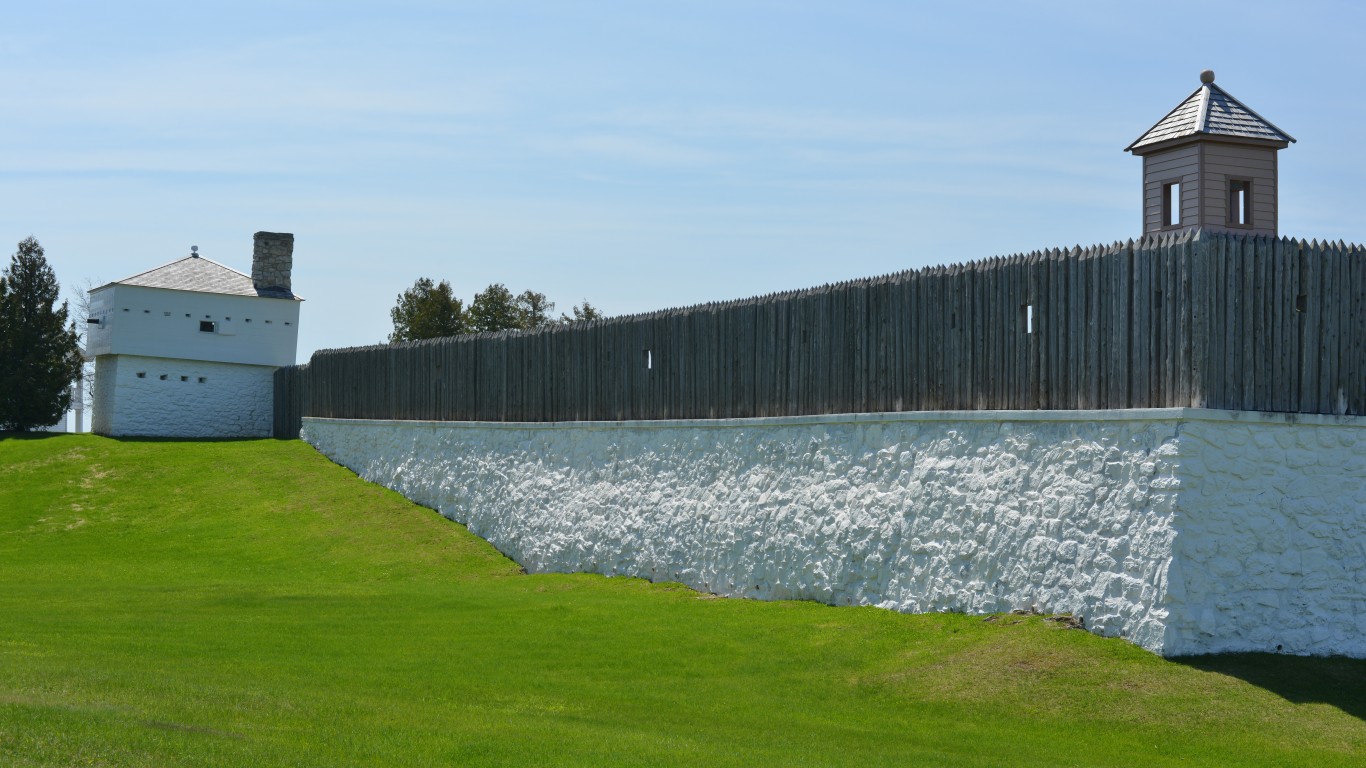
Fort Mackinac
> Location: Mackinac Island, Michigan
> Built: 1780
During the Revolutionary War, the British built Fort Mackinac to control the Straits of Mackinac between Lake Michigan and Lake Huron. The British stayed on until 13 years after the Revolutionary War ended. It was also the site of two significant battles during the War of 1812. For most of the 19th century it served as an Army outpost, until its closure in 1895.
[in-text-ad]
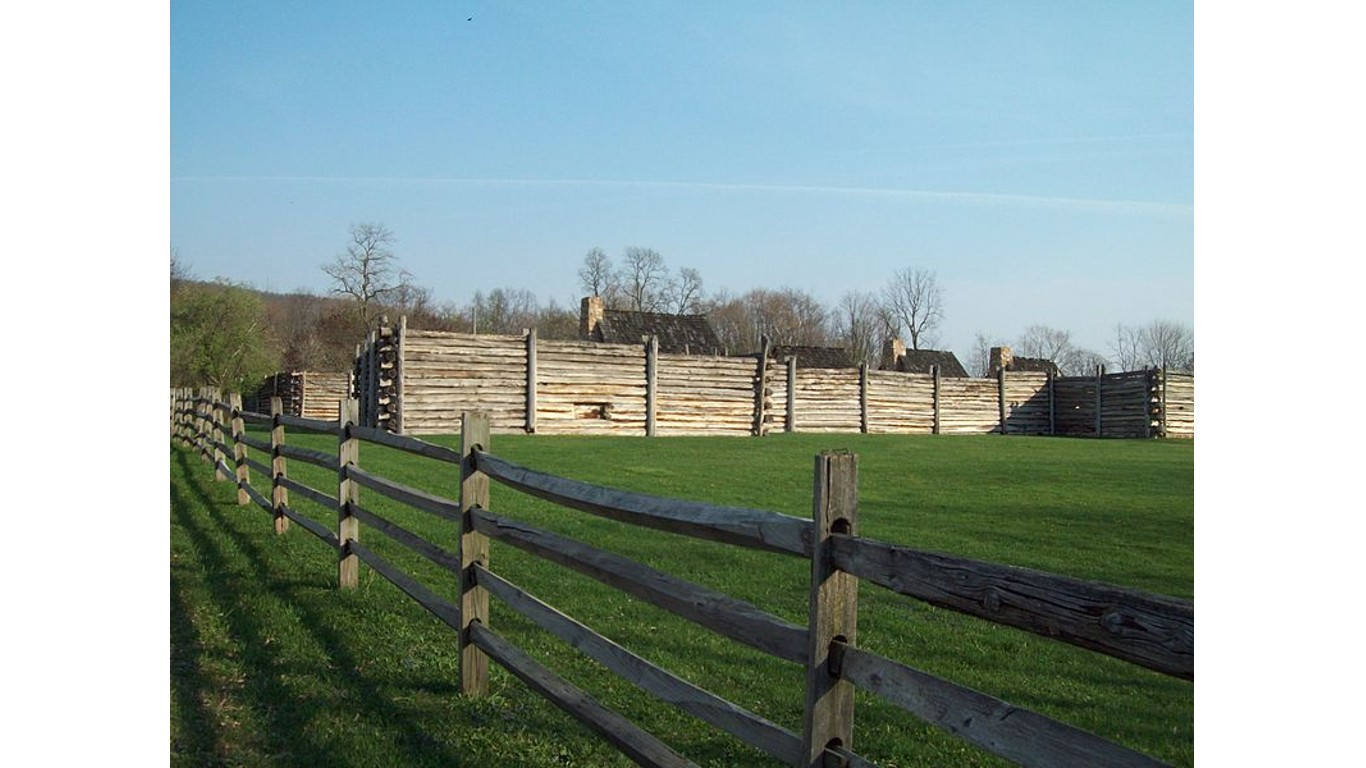
Fort Roberdeau
> Location: Altoona, Pennsylvania
> Built: 1778
Reconstructed
Also known as the Lead Mine Fort, Fort Roberdeau was an active military base from 1776 to 1780. General Daniel Roberdeau constructed the fort to protect the local mining industry from Native Americans and the British. After extensive reconstruction, it was added to the National Register of Historic Places in 1974.

Fort Lee
> Location: Fort Lee, New Jersey
> Built: 1776
Sitting atop the New Jersey Palisades, Fort Lee was originally named Fort Constitution. On Nov. 20, 1776, the British and Hessian troops overtook the bastion as the Continental Army retreated. Overlooking the Hudson River, Fort Lee is now the site of a historical park. Today, the town of Fort Lee is probably best known for its role in the infamous Bridgegate scandal.
Fort Revere
> Location: Hull, Massachusetts
> Built: 1776
Located on Telegraph Hill in Hull Village, the fort was originally named Fort Independence before being renamed in honor of Paul Revere. In 1777, the fort defended Boston Harbor and it maintained its strategic position there until it was decommissioned by the military in 1947. The fort is said to have a haunted, tragic past: When 200 French soldiers fighting for the colonies were freed by the British and taken to the fort, nearly all died of smallpox. Later inhabitants of the fort reported hearing strange noises and seeing unexplained shadows.
[in-text-ad-2]

Presidio of San Francisco
> Location: San Francisco, California
> Built: 1776
The Presidio was originally built by Spain to protect its colonies in the West. Between 1776 and 1821, it guarded California’s largest harbor from attacks from the British and Russians. It also played a role in the Mexican-American War of 1846-48. Until 1994, the Presidio remained an U.S. Army outpost until the fort was decommissioned and turned over to the National Park Service.
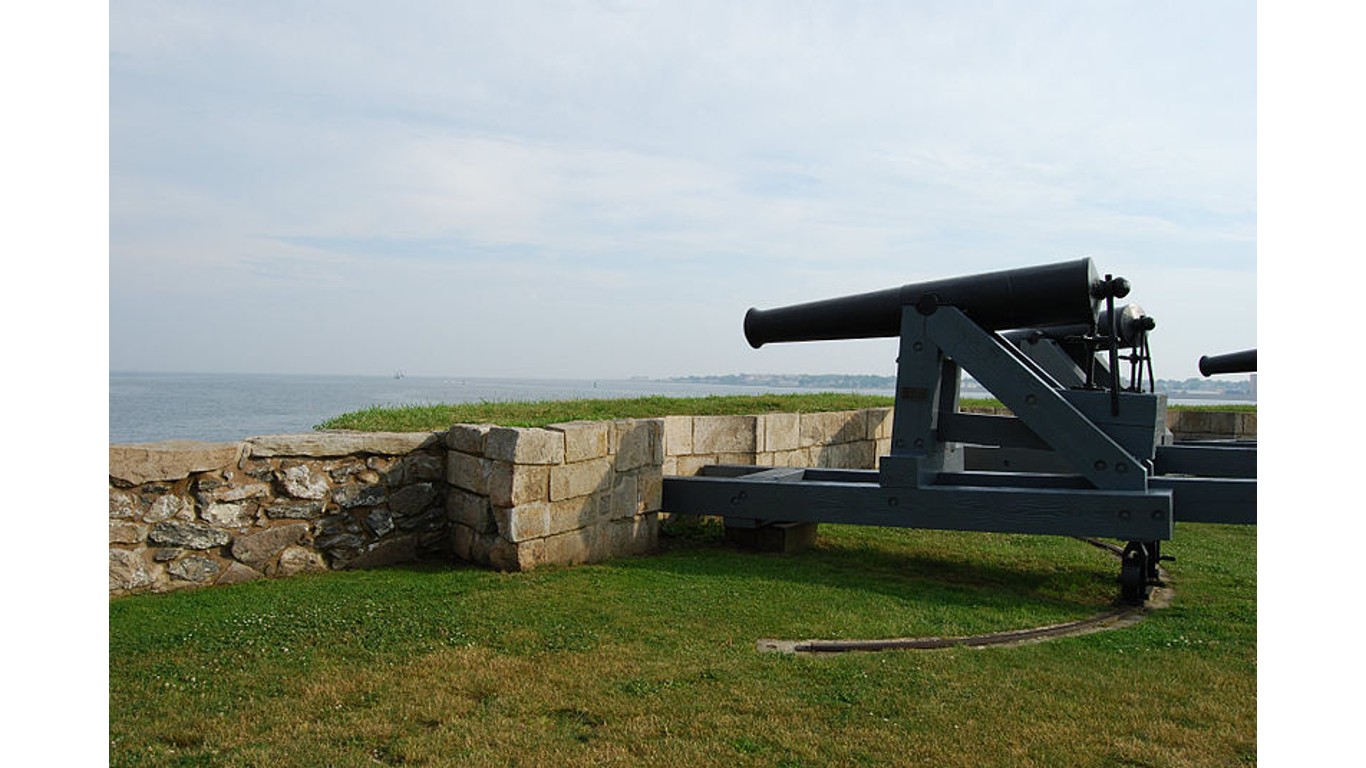
Fort Phoenix
> Location: Fairhaven, Massachusetts
> Built: 1775
Built at the entrance of the Fairhaven-New Bedford harbor, and originally given no name, it stood near the first naval battle of the Revolutionary war in Buzzards Bay in 1775. In 1778, the British destroyed the fort, but a counterattack led by Major Israel Fearing fought them off. The fort was named Fort Fearing in his honor, and in 1784 renamed Fort Phoenix because it had risen rom the ashes. It was rebuilt in 1798 and again in 1808. The British ship HMS Nimrod bombarded it in 1814 during the War of 1812, but after an exchange of fire with the local militia the Nimrod sailed away.
[in-text-ad]
Fort Boonesborough
> Location: Boonesborough, Kentucky
> Built: 1775
Founded in 1775 by Daniel Boone, Fort Boonesborough stood as a frontier redoubt until the early 19th century. The outpost saw action during the Revolutionary War and fended off an attack by Native Americans in 1778. After the war, it served as a stopping point for westward settlers and supported the tobacco trade.
Fort Watauga
> Location: Elizabethton, Tennessee
> Built: 1775
Also known as Fort Caswell, Fort Watauga is named for the Watauga River Valley in what is now northeast Tennessee. The fort was originally settled by European and American arrivals in the late 1760s. During the Revolutionary War, the fort fended off attacks by the Cherokees, said to have been instigated by the British. In July 1776, a Cherokee force attacked the fort and held it for two weeks before withdrawing. The fort played a role in the Revolutionary War in 1780, when the Overmountain Men, a group of frontiersmen from west of the Appalachians, gathered here before setting off to the battle of Kings Mountain in South Carolina. The militia’s victory there helped secure the Southern colonies from the British.
Are You Still Paying With a Debit Card?
The average American spends $17,274 on debit cards a year, and it’s a HUGE mistake. First, debit cards don’t have the same fraud protections as credit cards. Once your money is gone, it’s gone. But more importantly you can actually get something back from this spending every time you swipe.
Issuers are handing out wild bonuses right now. With some you can earn up to 5% back on every purchase. That’s like getting a 5% discount on everything you buy!
Our top pick is kind of hard to imagine. Not only does it pay up to 5% back, it also includes a $200 cash back reward in the first six months, a 0% intro APR, and…. $0 annual fee. It’s quite literally free money for any one that uses a card regularly. Click here to learn more!
Flywheel Publishing has partnered with CardRatings to provide coverage of credit card products. Flywheel Publishing and CardRatings may receive a commission from card issuers.
Thank you for reading! Have some feedback for us?
Contact the 24/7 Wall St. editorial team.
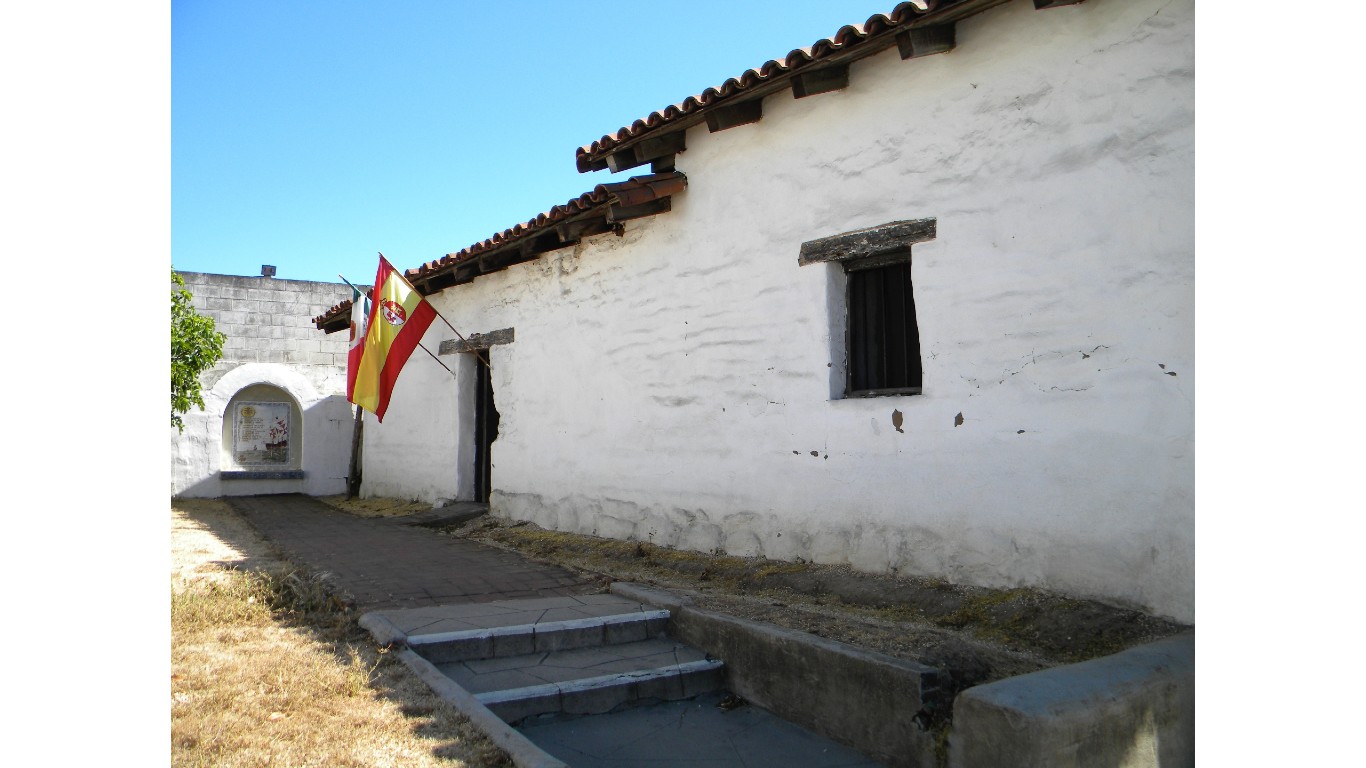
 24/7 Wall St.
24/7 Wall St.
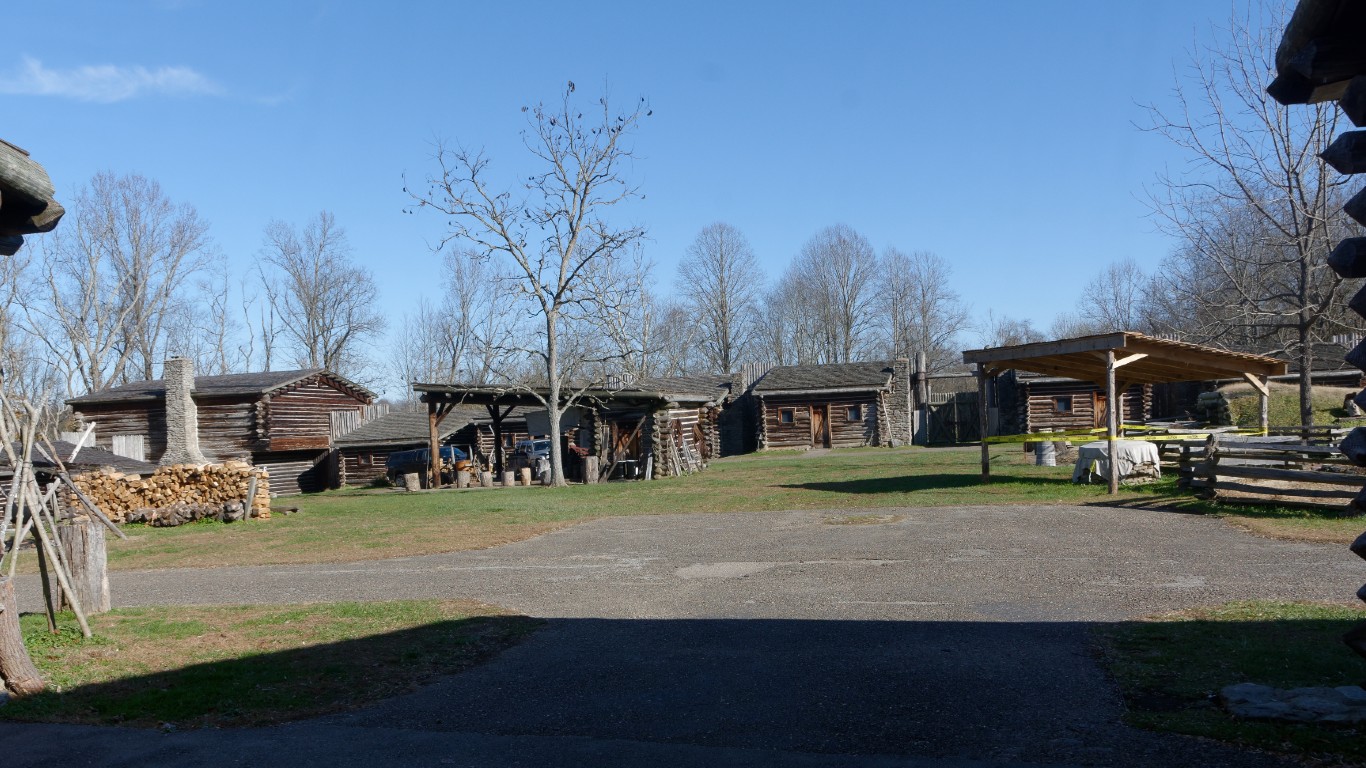
 24/7 Wall St.
24/7 Wall St.